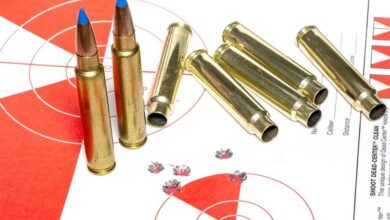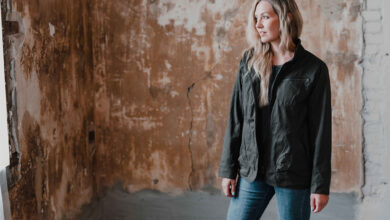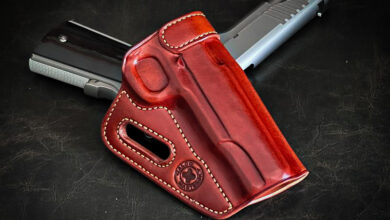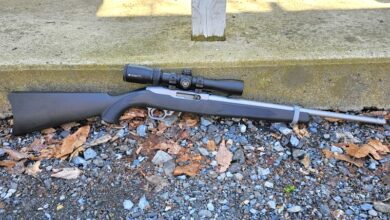The .357 Magnum in Snubnose Revolvers
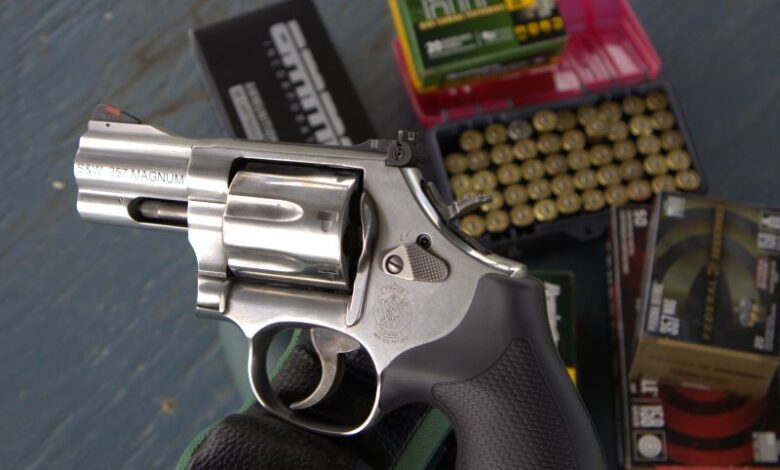
The .357 Magnum had been used for decades by police, security personnel, and armed citizens. Although not as prevalent now as it once was, it is still among the more popular revolver cartridges around. Certain limits do exist to its practicality, like any other round. There are many more .357 revolvers on the market now than during the round’s heyday, most of them smaller, lighter, and higher capacity than the traditional revolver. The smaller the revolver, the .357 Magnum becomes more obnoxious to shoot, and the shorter the barrel, the more potential loss for the Magnum’s legendary power. But how much barrel is too little? Let’s see how the .357 Magnum performs out of a 2.5-inch barrel.
A Brief Synopsis of the .357 Magnum
In the 1920s and 30s, law enforcement was increasingly equipped with .38 Special revolvers like the Smith & Wesson M&P and the Colt Police Positive. During prohibition, law enforcement sought any advantage as they continually did battle with organized crime and motor bandits. The .38 Special round had a particularly tough time penetrating car doors, and an effort was made to make the round more powerful. This led to the introduction of the .357 Magnum in 1935. It shared the same caliber and parent case as the .38 Special but was about 1/10th of an inch longer in case length and loaded to much higher pressures. Thus, the .38 Special could still be used, but the shooter had the option of more powerful ammunition.
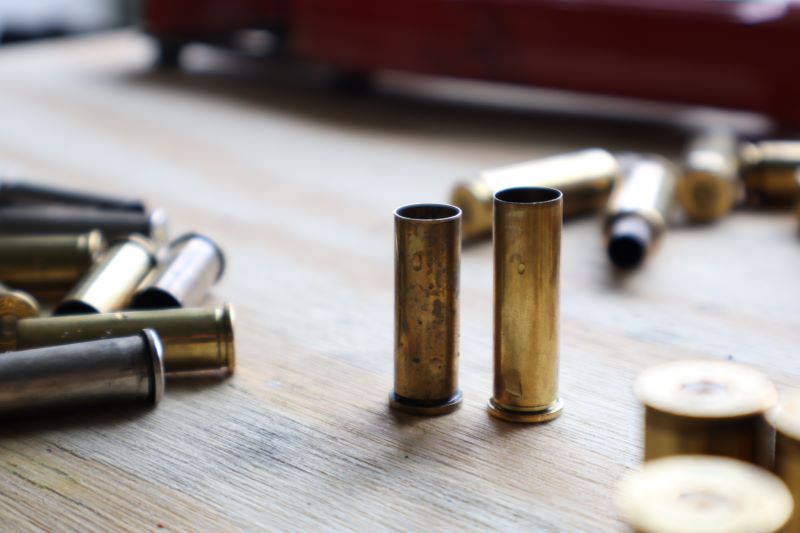
.357 Magnum Over .38 Special
The .357 Magnum revolver finally overtook .38 Special guns in popularity in the 1980s. The FBI adopted the Smith & Wesson Model 13 with a 3-inch barrel, and law enforcement nationwide invariably favored different flavors of Colt or Smith & Wesson revolvers, usually with a four- or six-inch barrel. However, the 1980s witnessed the gradual replacement of revolvers with higher-capacity auto-pistols.
Throughout its time, the .357 Magnum has been touted as a man-stopper. This was confirmed by the controversial Marshall and Sanow stopping power study, which found the .357 to exhibit 93-97% one-shot stops in the shootings aggregated for analysis. On paper, this study is confirmed by raw ballistic data. Loads like the Remington 125 grain semi-jacketed hollow-point could hop out at over 1500 feet per second for 624-foot pounds of energy, about twice that of a typical round of 9mm Luger or .45 ACP. The tradeoff is extra recoil, and the low-capacity consummate with a revolver.
Historically, revolvers with 4-inch or 6-inch barrels were most popular, but both Colt and Smith & Wesson cataloged revolvers with 2 3/4-inch and 3-inch barrels as well. In the 1990s, Smith & Wesson lengthened the cylinder frame of its small .38 Special J-frame revolver to accommodate the .357 Magnum cartridge. Colt, Smith & Wesson, Ruger, Taurus, and others now have a catalog of snub-nosed .357 Magnum revolvers available. But how far does the legendary .357 Magnum go down with these shorter barrels?
Stopping Power
It is often opined that the .357 Magnum’s powder cannot achieve a complete burn and simply flashes outside the short barrel, causing nothing but flash and recoil, with little extra power over the .38 Special round. Some commentators go as far as to suggest that a 9mm Luger would be a better alternative to the .357 in such a format. I am a fan of the .357 Magnum round for handgun hunting and overall defensive use, but the typical four-inch barreled revolvers are not easy to conceal or lug around. Given the lore, anything less than that would mean a lack of power. I later made the jump by picking up a new S&W 686+ with a 2.5-inch barrel. I leathered up the 686, wrangled some ammo, and headed for the range to see how much barrel was too little.
.357 Magnum in a Snub-Nosed Barrel: The Chronograph Tells the Tale
On a balmy false spring day, I took my 2.5-inch barreled 686 to the range with over a half-dozen different types of ammunition ranging from target rounds to premium defensive hollow points. I shot the revolver from a bench rest through my Caldwell Chronograph from a distance of ten feet. Starting with some .38 Special Wadcutter hand loads and some MagTech .38 Special 158-grain lead factory ammo before moving on to the magnum ammo. I fired five-round strings of each ammunition with the following results:
| Ammunition | Average Velocity (feet per second) | Muzzle Energy (foot-pounds) |
| Handload.38 Special 148 gr. WC | 609 | 122 |
| MagTech .38 Special 158 gr. LRN | 723 | 183 |
| Buffalo Bore .38 Special 158-grain LHP | 1,040 | 379 |
| Ammo Inc. .357 158 gr. FMJ | 1,089 | 416 |
| Remington .357 125 gr. JHP | 1,359 | 513 |
| Federal .357 158 gr. JSP | 1,161 | 473 |
| Fed .357 158 gr. Hydrashock | 1,223 | 525 |
| Buffalo Bore .357 158 gr. JHP | 1,342 | 632 |
Ammo Comparison
The .38 Special loads fired were done for comparative purposes relative to the .357 Magnum ammo I fired. The recoil and noise of these rounds were mild except for the Buffalo Bore 158 grain +P load. This was that company’s version of the old FBI semi-wadcutter hollow-point load. It’s loaded about as hot as can be handled by a .38 Special revolver. It came in with an average velocity of 1,040 feet per second. The next ammunition tried was some Ammo Inc. .357 Magnum 158-grain target loads. It was slightly more powerful than the .38 Special +P, and both rounds produced considerable muzzle flash and moderate recoil. With the best selection of .38 Special ammo and the worst selection of .357 Magnum ammo, it is possible to get some overlap in a shorter-barreled handgun. But generally, the .357 Magnum well outperformed the .38 Special ammunition out of the 686’s short barrel.
Testing Results
The Federal .357 Magnum 158-grain jacketed soft point is a moderate load that is neutered somewhat by this shorter barrel. It came in at 1,161 feet per second. The Federal 158 grain Hydrashock load was faster, and both rounds produced greater felt recoil and concussion when set off. On the range, these rounds were my threshold for promptly getting good follow-up shots on targets.
The Remington .357 125-grain JHP is a legendary fight stopper that I would be remiss to include. It is marketed under the High Terminal Performance line, and that is what it delivers. It produced an average velocity of 1,359 feet per second for 513-foot pounds of energy. From a snub-nosed revolver, that is nothing to sneeze at. It is also something to hang onto as the muzzle flash, muzzle rise, and felt recoil in the palm was exponentially higher than with the slower 158s.
Lastly, I tested one of Buffalo Bore’s heavy .357 loads. To keep things consistent with their .38 Special load, I opted for the same bullet weight—in this case, a 158-grain jacketed hollow point. Felt recoil rivaled the Remington round, but muzzle rise had the revolver twisting in my hand. But as always, Buffalo Bore delivered the goods with an average of 1,342 feet per second and 632-foot pounds of energy.
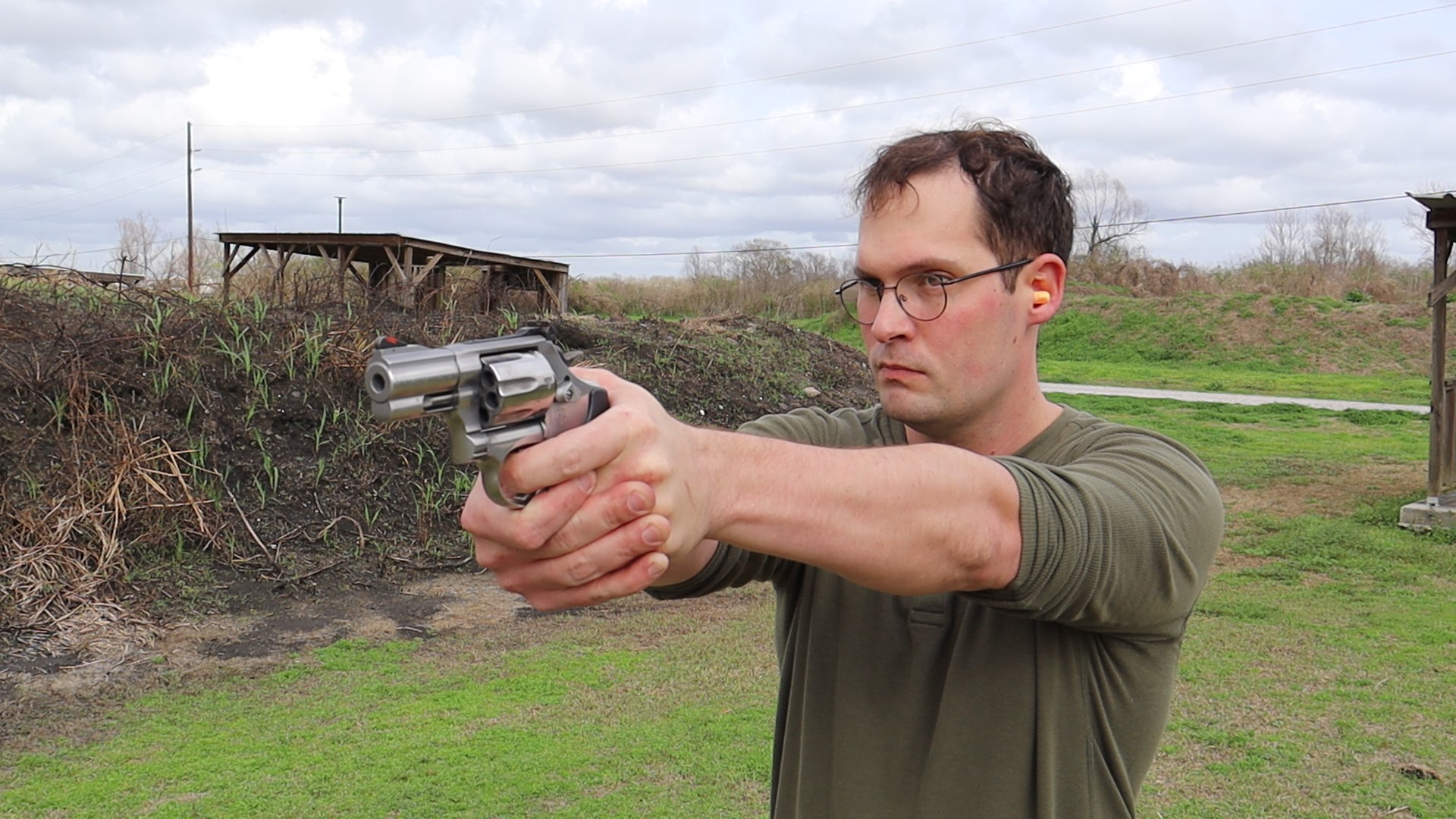
The .357 Snub-Nose: Worth the Trouble?
One test is worth a hundred rumors. I heard the rumors and I like to test them. word on the street is the .357 Magnum is a cartridge with legendary power. I have also heard more recent opinions, largely from those who like the latest and greatest breakthroughs, that the .357 Magnum is not worth it in a short, barreled handgun. The Magnum falls to .38 Special velocities, and the .38 Special, itself, is weaker than 9mm Luger. Thus, you would be better served with a 9mm pistol. This crowd tends to overlap with those who believe all handgun rounds perform similarly, so the extra power is simply wasted energy.
The chronograph told its tale, and while the numbers do not lie, context still matters when you are considering a smaller .357 Magnum revolver. Even out of a short barrel, the .357 is still much more powerful than even the most hopped-up .38 Special. All the Magnum loads tested here produced greater energy than 9mm Luger, but as we saw, not all magnum ammunition is created equally. While a more detailed look at .357 and 9mm is worthwhile, it is fair to conclude that the worst possible choice of Magnum loading and the best possible choice of 9mm could be surprisingly close.
The extra power of the .357 can indeed be wasted, though not in the sense that all handgun rounds are equivalent. The equivalence argument comes into play when reading stopping power studies in which some loadings for 9mm Luger, .40 S&W, and .45 ACP come close to the Magnum in one-shot stops. The same could be said about other stats that demonstrate the same number of rounds needed to end an altercation is roughly the same between all major calibers.
Final Thoughts
The .357 Magnum has its advantages over other rounds. It is more powerful and is available in more options, particularly when it comes to outdoor applications. That extra power, statistically, does not matter, though, as long as you hit what you are aiming at. Indeed, it can work against you. As you scale down the size of the revolver, the .357 Magnum becomes more unmanageable to shoot. Simply going down from a 4-inch .357 to this 686+ with a 2.5-inch barrel gave me a bit more recoil, more blast, and slower follow-up shots. Even so, this particular revolver is still heavy and comfortable to shoot. Going down to a smaller revolver like an air weight J-frame or a Ruger LCR in the same caliber does not brighten the picture. So, while you still get the power premium and versatility of the .357 Magnum, you gain as many obstacles to effective shooting.
The post The .357 Magnum in Snubnose Revolvers appeared first on The Mag Life.
Read the full article here

